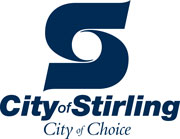Australia Post
“If you don’t know your customer, you don’t value your customer. Our customers needed to know we understood their businesses and their challenges if we were going to be trusted to help.”

Australia Post launches an enhanced CRM that helps customers, builds trust, and reinforces a sense of community
Australia Post does more than deliver the mail.
Its mission is to create opportunities that matter to each Australian. "We're helping customers to create connections," said a representative from Australia Post’s Customer Success team; a team that works with everyone from small businesses to large enterprises, government, and international organisations and helps them with their own customers, consumers, and business partners. “We found that especially during the COVID period, that work has really been about helping people keep things moving – helping them find a new way of operating so that their businesses survive.”
To do this, the team had to modernise their own operations so that Australia Post could meet customers where they were at: online, in the cloud.
Here's how they did it.
Australia Post’s customers (and therefore Australia Post itself) has to move with industry trends
Long before anyone had ever heard of COVID-19, Australia Post’s customers were already navigating a foundational shift in business strategy. Traditional brick-and-mortar retailers, a large percentage of Australia Post’s business customer base, were seeing people increasingly buying goods and services online. This required Australia Post’s customers to quickly shift their business models to stay relevant:
- Businesses needed to offer omni-channel experiences, requiring integrated strategies and agile operations that put the customer experience at the centre.
- Businesses needed to know the history they had with a given customer, even if that history was spread across social media, email conversations, or phone calls.
- Businesses needed to move faster as customers now expected speedy service delivery that has become the norm with internet-based retailers.
When COVID-19 hit, it created the need to redefine words like speed (could a retailer get toilet paper restocked fast enough circa March / April 2020?) and place even more emphasis on the need for connected, digital channels.
“If you don’t know your customer, you don’t value your customer,” said the team. “Our customers needed to know we understood their businesses and their challenges if we were going to be trusted to help.”
Australia Post needed to shift its focus from individual products and services to the customer experience. Australia Post needed to bring data and information into a single view so that they could streamline operations and deliver services faster to their business customers. Australia Post needed a digital-first strategy that demonstrated more access and greater agility as they themselves navigated the same shift impacting the very foundation of the business. "We use normal passenger and dedicated freight planes to get parcels and mail from A to B. When COVID-19 shut down many national and international flights, our ability to move mail and parcels was interrupted,” the representative continued. “We needed to make it easier for customers to do business with us and simplify the way we work internally because doing business was hard enough.”
It was these needs that brought the Australia Post team to the cloud.
Best practices from Australia Post
The team introduces an agile, accessible, customer-first platform
The team launched Salesforce Customer 360, an integrated CRM platform to connect and visualise meaningful data. It gives Australia Post the tools it needs to deliver fast, agile, integrated services online that puts the customer first.
Here’s how it works:
Data-driven dashboard: Sales teams start their day by logging into a dashboard called Customer 360 Australia Post built using CRM Analytics. It brings all the key information about their accounts into one place, which Account Managers use to get a snapshot view of what's happening at a customer-by-customer level, access customer health and recommend follow up actions. Account Managers use this to prioritise their work within an account, see new customers or opportunities, address any flags that have been raised due to, say, a customer complaint, and more. (Refer to Customer 360 on a page attachment)
CRM: New accounts or opportunities are populated in this dashboard by Sales Cloud, which Australia Post uses to store information about a customer in a profile-like record. Here, Account Managers can make updates, review historical information, assign tasks to supporting teams, and more.
Service and case management: If something was flagged in the dashboard because of a concern or complaint, the Account Manager can click into the case record via Service Cloud and follow up on next steps including reviewing the details of the complaint, tagging subject matter experts on tough questions, and notifying the customer of status updates. “We also do a real-time credit assessment for most of our business customers. We delivered a digital form which they can use to request a line of credit. The information they enter is captured in a case record, which we review, approve, and then issue a credit amount so that they can start trading with us. That used to be a paper form that customers had to get from a post office, fill out, and then bring it back,” the team commented.
Virtual training and enablement: myTrailhead was added, which teams use to onboard as new employees, learn about new business processes or guidelines, get trained on new tools, complete annual certifications, and more.
Platform-level services: Shield helps bring an additional layer of security to the platform, and Sandbox offers a test environment for perfecting new features and functionality without disrupting Australia Post’s active tools and operations.
“And the platform integrates with our ERP systems, which was a big deal for our team,” said the team. “Instead of creating accounts or uploading new information manually, we can just click a button and accounts are created in real time. No unnecessary admin work, no manual data entry, no waiting overnight for the ERP to upload. This not only makes the job easier for our employees, but also frees up more time and energy for people to focus on the customer at the centre of all this, show them we understand and value their business, and build those trusted relationships.”
Real results deliver meaningful impact
The project, which took about six months to implement, has resulted in positive impacts for both Australia Post's way of working and for its customers.
"One of our key drivers was to reduce the end-to-end-cycle time from when an Account Manager first spoke to the customer to when they were up and running in our system by ten days," said the team. "We've actually reduced it by 27 days. Every day that the customer is up and running is a day that we’re helping their business not just survive, but thrive."
Automation has also impacted the customer experience, providing more self-service capabilities that give customers more options for accessing pricing information, reviewing proposals and contracts, and even to bypass the customer onboarding team and instead simply onboard themselves. The team measured the percentage of opportunities where customers were able to use self-service to access pricing proposals and to complete contracting and self-onboard and found that the number went from zero to 50%.
Keep exploring stories like this one.
Questions? We’ll put you on the right path.
Ask about Salesforce products, pricing, implementation, or anything else — our highly trained reps are standing by, ready to help.












